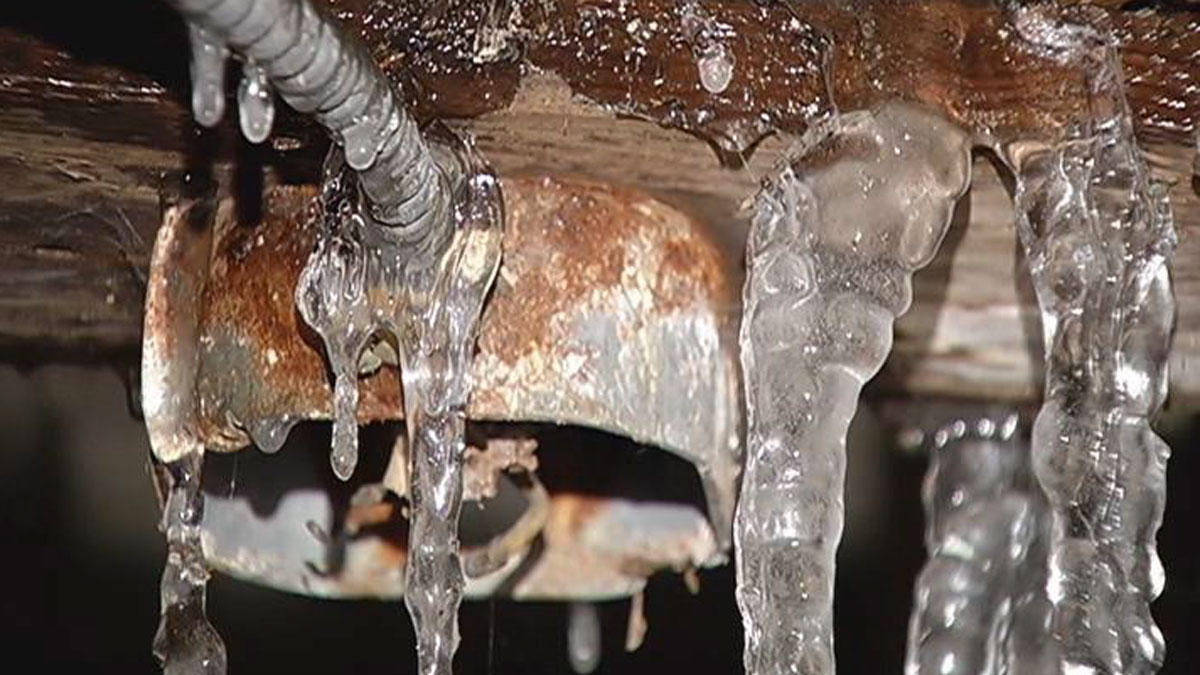Here on the next paragraphs you will find some good quality answers pertaining to 6 Ways to Prevent Frozen Pipes.

Cold weather can damage your pipes, particularly by freezing pipelines. Below's just how to avoid it from occurring and what to do if it does.
Intro
As temperature levels decrease, the threat of icy pipelines rises, possibly leading to expensive repair services and water damage. Recognizing how to avoid frozen pipes is important for house owners in chilly environments.
Avoidance Tips
Shielding prone pipes
Wrap pipes in insulation sleeves or use heat tape to secure them from freezing temperature levels. Focus on pipelines in unheated or external locations of the home.
Heating methods
Keep indoor rooms properly warmed, specifically areas with plumbing. Open up cabinet doors to permit warm air to circulate around pipes under sinks.
How to identify frozen pipelines
Look for lowered water flow from taps, uncommon smells or noises from pipelines, and visible frost on subjected pipes.
Long-Term Solutions
Architectural adjustments
Think about rerouting pipes away from outside wall surfaces or unheated areas. Include additional insulation to attics, cellars, and crawl spaces.
Upgrading insulation
Invest in premium insulation for pipes, attics, and wall surfaces. Proper insulation aids preserve consistent temperature levels and decreases the threat of icy pipelines.
Securing Exterior Plumbing
Yard hoses and exterior faucets
Detach and drain pipes garden pipes before winter months. Install frost-proof faucets or cover outside taps with insulated caps.
Recognizing Frozen Pipelines
What causes pipes to ice up?
Pipelines freeze when revealed to temperature levels listed below 32 ° F (0 ° C) for expanded durations. As water inside the pipelines freezes, it broadens, taxing the pipe walls and possibly triggering them to break.
Dangers and damages
Frozen pipelines can lead to supply of water disturbances, residential property damages, and costly repairs. Burst pipelines can flooding homes and trigger comprehensive structural damage.
Indications of Frozen Water Lines
Recognizing icy pipelines early can prevent them from rupturing.
What to Do If Your Pipelines Freeze
Immediate actions to take
If you think icy pipes, keep faucets open to eliminate stress as the ice melts. Use a hairdryer or towels taken in hot water to thaw pipelines slowly.
Final thought
Stopping icy pipelines requires proactive actions and quick responses. By comprehending the reasons, indicators, and preventive measures, homeowners can protect their plumbing during winter.
5 Ways to Prevent Frozen Pipes
Drain Outdoor Faucets and Disconnect Hoses
First, close the shut-off valve that controls the flow of water in the pipe to your outdoor faucet. Then, head outside to disconnect and drain your hose and open the outdoor faucet to allow the water to completely drain out of the line. Turn off the faucet when done. Finally, head back to the shut-off valve and drain the remaining water inside the pipe into a bucket or container. Additionally, if you have a home irrigation system, you should consider hiring an expert to clear the system of water each year.
Insulate Pipes
One of the best and most cost-effective methods for preventing frozen water pipes is to wrap your pipes with insulation. This is especially important for areas in your home that aren’t exposed to heat, such as an attic. We suggest using foam sleeves, which can typically be found at your local hardware store.
Keep Heat Running at 65
Your pipes are located inside your walls, and the temperature there is much colder than the rest of the house. To prevent your pipes from freezing, The Insurance Information Institute suggests that you keep your home heated to at least 65 degrees, even when traveling. You may want to invest in smart devices that can keep an eye on the temperature in your home while you’re away.
Leave Water Dripping
Moving water — even a small trickle — can prevent ice from forming inside your pipes. When freezing temps are imminent, start a drip of water from all faucets that serve exposed pipes. Leaving a few faucets running will also help relieve pressure inside the pipes and help prevent a rupture if the water inside freezes.
Open Cupboard Doors
Warm your kitchen and bathroom pipes by opening cupboards and vanities. You should also leave your interior doors ajar to help warm air circulate evenly throughout your home.

We were made aware of that write-up on Winter Plumbing Precautions: Preventing Frozen Pipes from a buddy on a different domain. Sharing is good. Helping others is fun. We love reading our article about How To Avoid Freezing Pipes.
Click Here